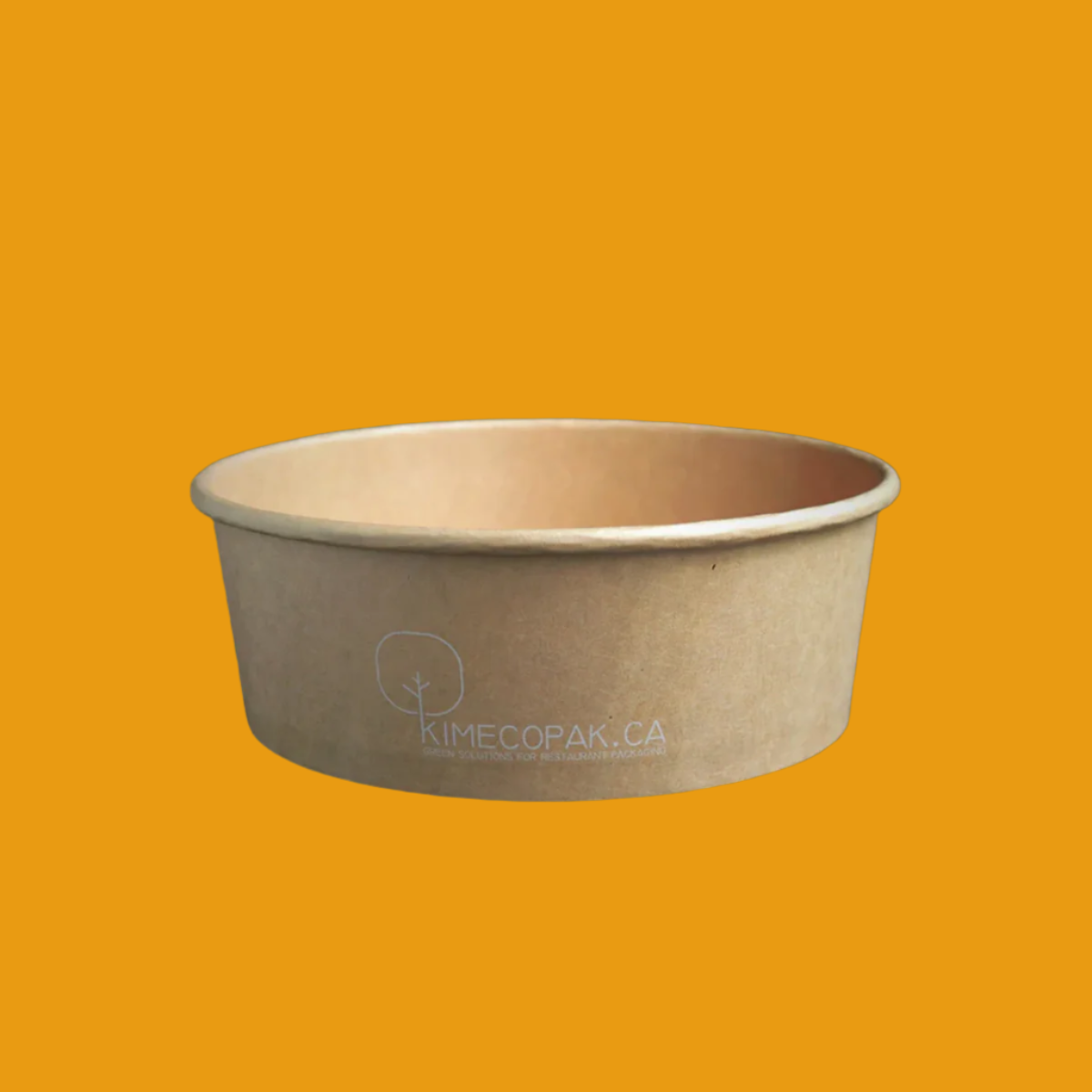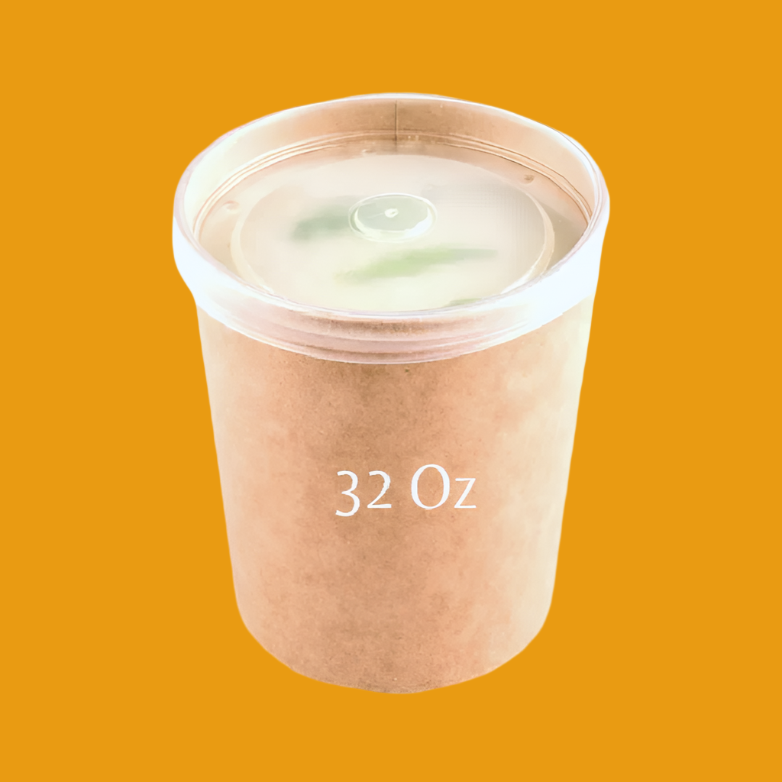Imagine serving hungry tummies while helping our planet! It's possible with eco-friendly packaging! Ditch the plastic and choose options that decompose, recycle, or last for years. These choices can help non-profits save money, reduce waste, and create a greener future. Let's explore how eco-friendly packaging can make a difference and how to implement eco-friendly packaging in pre-meal program in our today article.
Related: What Are the Best Sustainable Packaging Options for Food Banks?
Why Non-profit Organization Should Embrace Eco-friendly Packaging?
Embracing eco-friendly packaging for pre-meal initiatives aligns with their values and offers numerous benefits for both the environment and the organization itself. Eco-friendly packaging can solve environmental problems of plastic packaging and cost concerns, operational and branding issues. Below are the explanation.
What is Green Packaging?Types of Green Packaging?
Problems of Plastic Packaging
Traditional plastic packaging, especially single-use items, is a major contributor to:
- Environmental Pollution: Plastic packaging ends up in landfills and oceans, polluting ecosystems, harming wildlife, and disrupting natural habitats.
- Resource Depletion: Producing plastic requires fossil fuels and virgin resources, contributing to resource depletion and environmental damage.
- Human Health Risks: Certain plastics leach harmful chemicals into food or beverages, posing potential health risks to consumers.
- Waste Management Challenges: Disposing of plastic waste is expensive and inefficient, placing a strain on waste management systems.
Switch to eco-friendly packaging helps:
- Reduced waste and pollution: minimize their environmental footprint and align with their values of protecting the planet by choosing recyclable, compostable, or reusable options.
- Resource conservation: Eco-friendly packaging often utilizes recycled materials or renewable resources like bamboo or plant-based materials. This reduces the demand for virgin resources and promotes responsible consumption, aligning with the non-profit's mission to promote sustainable practices.
- Combating climate change: Manufacturing and transporting traditional packaging requires significant energy and generates greenhouse gas emissions. Choosing eco-friendly alternatives reduces these emissions and demonstrates a commitment to combating climate change, a crucial issue often addressed by non-profits.
Benefits of Eco-friendly Packaging for Non-profit Organization
As mentioned above, using eco-packaging offers significant benefits in terms of cost, operation, and brand image for non-profit organization. Here is the breakdown of each of them:
Cost Savings: While eco-friendly options might initially seem more expensive, they can lead to long-term cost savings:
- Reduced waste disposal fees: Reusable containers and compostable packaging eliminate the need for frequent disposable purchases and associated waste disposal costs.
- Lower shipping costs: Eco-friendly packaging often uses lighter materials and minimizes packaging size, reducing transportation costs.
Operational Advantages:
- Improved efficiency: Reusable containers simplify logistics and reduce the need for ordering and managing disposable packaging.
- Enhanced brand image: Demonstrating a commitment to sustainability attracts environmentally conscious donors, volunteers, and partners.
- Community engagement: Promoting eco-friendly practices aligns with the non-profit's mission and fosters positive relationships within the community.
Positive Brand Image: Embracing eco-friendly packaging showcases the non-profit's commitment to environmental responsibility and social good, enhancing its reputation and attracting support from environmentally conscious stakeholders:
- Donor appeal: Eco-conscious donors are increasingly looking to support organizations that align with their values, and sustainability is a key factor in their decision-making.
- Volunteer engagement: Volunteer play important roles for non-profits organization. Environmentally conscious individuals are more likely to volunteer for organizations that share their values, strengthening the non-profit's volunteer base.
- Media coverage and public perception: Demonstrating a commitment to sustainability can attract positive media attention and enhance the non-profit's public image.
Overall, choosing eco-packaging packaging is not just an environmental choice for non-profit organizations; it's a strategic decision with tangible benefits for their finances, operations, and brand image

Alternatives Packaging for Pre-meal for Non-profit Organizations
Key Criteria of Eco-Packaging for Pre-Meal Program
For eco-packaging to be suitable for non-profit organizations serving pre-meals, it needs to satisfy several key criteria:
Environmental:
- Biodegradable or compostable: Minimize landfill waste and promote decomposition through natural processes.
- Recyclable: Made from recycled materials or easily recyclable for resource conservation.
- Sustainable materials: Utilize renewable resources like bamboo, plant-based materials, or recycled paper.
- Minimize packaging: Reduce the amount of packaging used to conserve resources and minimize waste.
Functional:
- Food safety: Ensure the packaging protects food from contamination and maintains proper temperature.
- Leakproof and spill-proof: Prevent leaks or spills during transport and distribution.
- Durable and sturdy: Withstand handling and transportation without tearing or breaking.
- Easy to open and close: Accessible for users with varying abilities.
- Portion control: Allow for appropriate portion sizes when serving meals.
Cost-effective:
- Affordable: Fit within the non-profit's budget and avoid significantly increasing meal costs.
- Reusable: Options like reusable containers can be cost-saving in the long run.
- Locally sourced: Reduce transportation costs and support local businesses.
Additional Considerations:
- Aesthetics: Appealing and visually pleasing design to enhance the dining experience.
- Branding: Allow for printing or branding to promote the non-profit's message.
- Storage and handling: Easy to store and transport without requiring special equipment.
Types of Eco-Packaging for Non-Profit Organizations
When it come to type of eco-friendly packaging that can be used, there are different choice categorized by material.
Reusable Containers:
- Stainless steel lunchboxes, glass jars, silicone food pouches, and reusable cloth wraps.
- Pros: Durable, long-lasting, reduce waste, can be branded.
- Cons: Requires cleaning, storage space, and initial investment.
Compostable Options:
- Plant-based containers made from corn starch, bagasse, or mushroom mycelium. To discover more compostable packaging, here is guide to understand right about compostable materials.
- Pros: Biodegradable, reduce landfill waste, suitable for food scraps.
- Cons: May have limited availability and specific handling requirements.
Recyclable Packaging:
- Cardboard boxes, paper bags, and paperboard trays made from recycled content.
- Pros: Widely available, cost-effective, can be recycled in many communities.
- Cons: Not all communities have access to recycling facilities, still generates some waste.
Biodegradable and Sustainable Options:
- Bamboo cutlery, seaweed wraps, beeswax food wraps.
- Pros: Eco-friendly, attractive alternatives, some compostable.
- Cons: May be more expensive than traditional options, not widely available.
How To Implement Eco-friendly Packaging to Non-Profit Organizations for pre-meal Initiatives
Implementing eco-friendly packaging for a non-profit's pre-meal initiatives requires careful planning and strategic action. Here's a step-by-step guide to help you navigate this process:
Assess Your Current Situation:
- Analyze your pre-meal program: Identify the types of food served, serving sizes, frequency of distribution, and current packaging practices.
- Calculate the amount of waste generated: Quantify the packaging waste produced and associated disposal costs.
- Survey volunteers and beneficiaries: Gather feedback on existing packaging regarding ease of use, accessibility, and environmental concerns.
Research Eco-Friendly Alternatives:
- Explore different eco-packaging options: Consider reusable containers, compostable packaging, recycled materials, and sustainable alternatives like bamboo cutlery or beeswax wraps.
- Research suppliers and pricing: Compare costs, availability, and minimum order quantities of various eco-friendly packaging options.
- Contact environmental organizations and packaging vendors: Seek advice and explore partnerships for discounts or bulk purchasing.
Develop a Cost-Effective Plan:
- Consider both short-term and long-term costs: Compare the initial investment in eco-friendly packaging with potential cost savings from reusables, reduced waste disposal, and enhanced brand image.
- Identify funding sources: Explore grants, fundraising initiatives, or corporate partnerships to support the transition to eco-friendly packaging.
- Develop a phased implementation plan: Start with small steps, focus on high-impact areas first, and gradually transition to comprehensive eco-packaging across all pre-meal initiatives.
Raise Awareness and Educate Stakeholders:
- Inform volunteers and beneficiaries about the transition to eco-friendly packaging and its benefits.
- Provide training on proper handling and care of reusable containers, if applicable.
- Engage the community: Encourage volunteers and beneficiaries to contribute ideas and participate in the decision-making process.
- Showcase your efforts: Promote your commitment to sustainability through social media, press releases, and community events.
Monitor and Evaluate:
- Track the impact of your eco-packaging initiatives: Monitor waste reduction, cost savings, and community feedback.
- Regularly assess the effectiveness of chosen packaging options: Identify any challenges or areas for improvement.
- Be open to adapting and refining your approach: Embrace continuous improvement and adjust your strategy based on feedback and ongoing evaluation.
How Kimecopak Help Non-Organization?
Kimecopak is a leading provider of wholesale eco-packaging for the North American market. We offer a wide variety of products, including disposable trays, to-go-box, paper soup cups, paper coffee cups, disposable straws, and disposable cutlery. Our products are made from high-quality materials and are designed to meet the needs of non-profits.
Kimecopak can help non-profits in a number of ways:
- Reduce waste: Our eco-packaging is recyclable, compostable, or made from renewable resources. This helps non-profits reduce their environmental impact and contribute to a more sustainable future.
- Save money: Our products are often more cost-effective than traditional single-use packaging. This can help non-profits save money on their food delivery costs.
- Improve image: Using eco-packaging shows that non-profits are committed to sustainability. This can help attract new donors and volunteers and build a positive reputation in the community.
Here are some specific examples of how Kimecopak products can help non-profits:
- A food bank can use our recyclable paper soup cups to serve hot meals to those in need.
- A soup kitchen can use our compostable food containers to deliver meals to the homeless.
- A homeless shelter can use our reusable cutlery to serve meals to its residents.
If you are a non-profit organization looking for eco-packaging, please contact Kimecopak via email halo@kimecopak.ca or our Facebook Fanpage. We would be happy to discuss your needs and find the right solutions for your organization.
In conclusion, non-profits have the power to nourish both people and the planet by embracing eco-friendly packaging. Ditching plastic is no longer just an option, it's a necessity. Choose Kimecopak as your trusted partner in sustainable packaging, and together, let's build a greener future, one delicious bite at a time.









